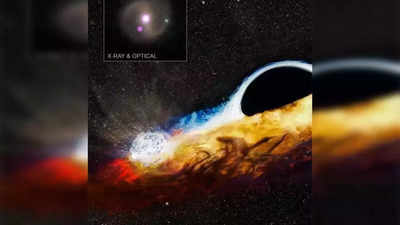- News
- Science News
- Fast radio burst discovered in an ancient 11.3 billion-year-old galaxy
Fast radio burst discovered in an ancient 11.3 billion-year-old galaxy
Scientists discovered a new fast radio burst named FRB 20240209A. This FRB originated from an old galaxy 11.3 billion years old, challenging previous beliefs that such bursts come from young active galaxies. The discovery suggests that old systems can also produce these bursts, offering new insights into the cosmic environments capable of generating them.
For some years now, scientists have shown an interest in the fast radio bursts (FRBs), the sudden, furious eruptions of energy that would beam as much power in a millisecond as the Sun beams out in a year. Ever since their first observation in 2007, such bursts, coming largely from distant galaxies, have posed some of the greatest enigmas of astrophysics. And all of these established theories on FRBs get contradicting reports in a newly unearthed discovery.
New discovery of FRB 20240209A challenges existing theories of cosmic energy sources
Scientists working with the Canadian Hydrogen Intensity Mapping Experiment identified a new FRB. The scientists named this FRB FRB 20240209A. It was an unusual one as it imploded 21 times over the next months, making trace-back to its origins traceable to an old galaxy that was about 11.3 billion years old. The galaxy it originated from is 2 billion light-years away from Earth and hasn't produced new stars for a long time. The natural inference is that this would not be an anticipated source of such focused energy.
Historically, FRBs were believed to be related to magnetars - neutron stars possessing extremely strong magnetic fields. Such objects are known to emit bursts of energy that could be very strong, and hence they represent the first candidate source of FRBs. However, in this case, the magnetar associated with FRB 20240209A seems to live in an environment far removed from conditions typically sustaining such explosive activity.
FRB 20240209A challenges previous assumptions on the origins of fast radio bursts
The discovery of FRB 20240209A has actually implied that not all the outbursts could be associated with young active galaxies, although so far, many authors have presumed those to be more likely produced, but now appears to emanate from mature old systems, as such systems in a range wider than previously envisaged can also account for producing these FRBs under conditions very likely different than formerly assumed.
Tarraneh Eftekhari, co-author of one of the studies says about the fact that the age and old, quiescent systems are responsible for FRBs rather than young, star-forming galaxies that form a new knowledge about their origins and also about different kinds of cosmic environments which are capable of producing such explosive events.
Also Read | ISRO to launch 100th mission from Sriharikota: GSLV-F15 with NVS-02 satellite – Date, time, and where to watch
End of Article
FOLLOW US ON SOCIAL MEDIA
Hot Picks
TOP TRENDING
Explore Every Corner
Across The Globe


